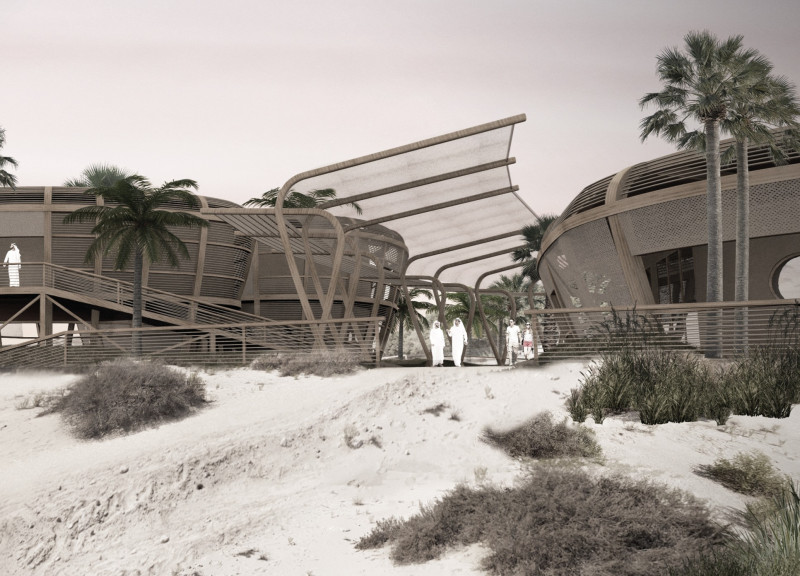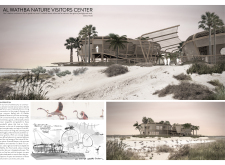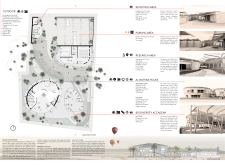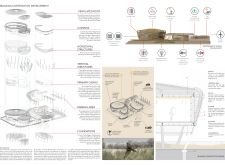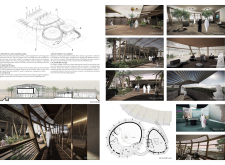5 key facts about this project
At its core, the project is not just a physical structure; it represents a progressive vision that harmoniously integrates sustainable practices with contemporary architectural principles. The design is aimed at providing a refuge for users, whether for work, leisure, or community gatherings. This multifunctionality transforms the space into a lively hub, inviting a diverse range of activities while maintaining a sense of cohesion and purpose.
The architectural design prioritizes an open layout that encourages both individual and group interactions. Central to the project are communal areas that promote collaboration and creativity, reflecting a modern workplace ethos. These spaces are carefully planned to enhance functionality while ensuring that users feel comfortable and inspired. Incorporating elements such as large windows ensures that the interiors are filled with natural light, creating an inviting atmosphere that connects occupants with the outdoor environment.
A distinctive characteristic of this project is its materiality. The design employs a thoughtful selection of materials that not only fulfill aesthetic criteria but also align with the project’s sustainable vision. Concrete serves as a primary building element, providing strength and durability while facilitating efficient use of space. Complementing this, glass plays a significant role in the façade, allowing for expansive views and encouraging a visual dialogue with the external surroundings.
Wood features prominently in various applications throughout the design, introducing warmth and texture that balance the cooler tones of concrete and glass. This interplay of materials is further enhanced by the inclusion of natural stone, which grounds the building within the context of its environment. The strategic use of steel in structural and design details adds an industrial touch while maintaining structural integrity and flexibility in the overall form.
The design also embraces innovative features that underscore sustainability. Incorporating green roofs and rainwater harvesting systems highlights a commitment to environmental stewardship. These elements not only contribute to the architectural aesthetics but also serve practical purposes by improving energy efficiency and reducing the overall ecological footprint of the building.
In exploring unique design approaches, it is evident that the project does not shy away from contemporary trends in architecture, such as biophilic design principles. The integration of indoor gardens and living walls fosters a direct connection between occupants and nature, promoting well-being while enhancing the visual appeal of the space. This approach is complemented by carefully considered landscaping that wraps around the structure, creating a seamless transition between indoor and outdoor environments.
The interaction of public and private spaces within the design reflects a deep understanding of social dynamics and user needs. Dedicated areas for quiet reflection coexist with vibrant community spaces, catering to various activities throughout the day. This balance creates an environment where solitude and social interaction are both valued, providing users with the flexibility to engage with the space in multiple ways.
As you delve deeper into the presentation of this architectural project, consider exploring the detailed architectural plans, architectural sections, and the various architectural designs that bring these ideas to life. Each aspect of this project contributes to a cohesive narrative that speaks to the intersection of functionality and aesthetics in contemporary architecture. Engaging with the project’s various elements will offer you richer insights into the thought processes and design concepts that define this compelling architectural endeavor.


